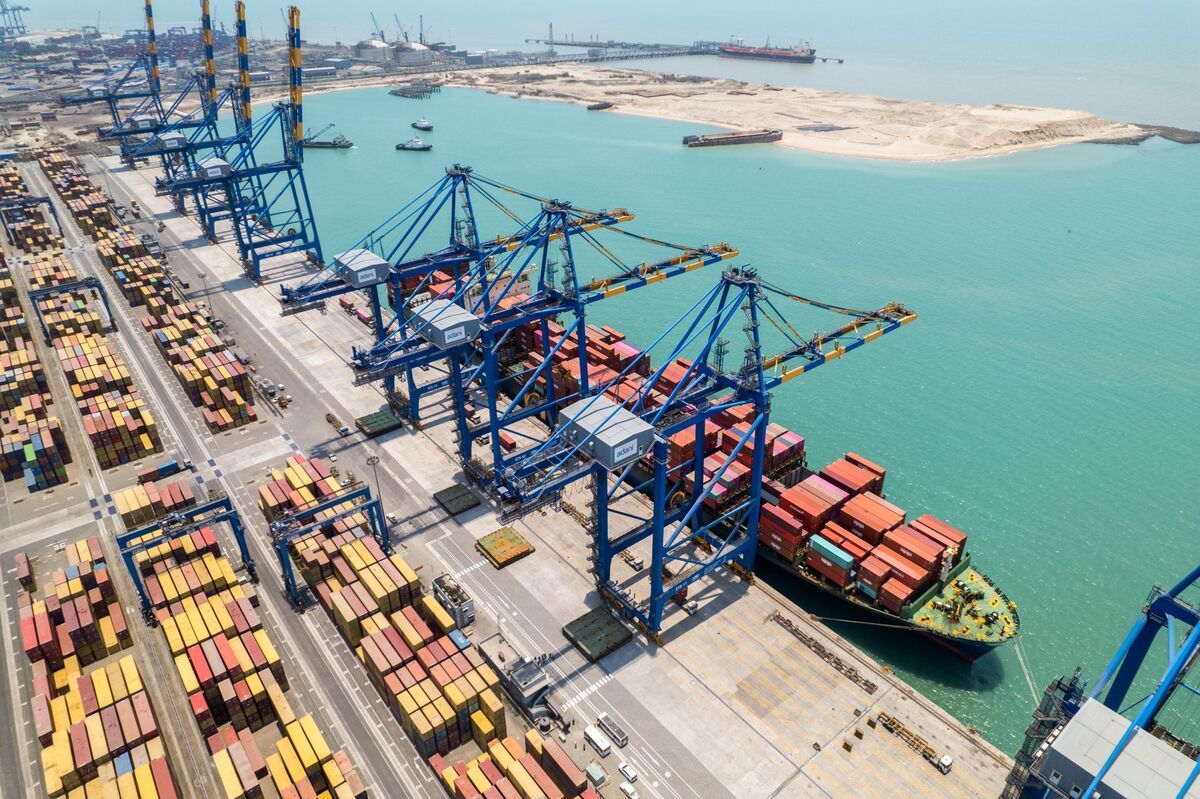- Arvind's Newsletter
- Posts
- Arvind's Newsletter
Arvind's Newsletter
Issue No. #1118
1.India’s core sector output grows 0.5% in April, the lowest in eight months: Mint
The output of eight core infrastructure sectors, which account for two-fifths of India’s industrial output, expanded by 0.5% in April, its lowest in the last eight months, from 4.6% in March.
It was recorded at 6.9% in April 2024. The growth in March 2025 was revised from 3.8% to 4.6%.
Only two of the eight core industries—coal and natural gas—reported a sequential rise in production during April, according to the provisional data released by the ministry of commerce and industry on Tuesday.
Core sector output contributes 40.27% to the Index of Industrial Production (IIP).
2.India Expects Multi-Phase Trade Deal With US as Talks Proceed: Bloomberg
India expects to reach an initial trade deal with the US before July. The agreement would likely be structured in three tranches, according to officials in New Delhi familiar with the matter.
The interim deal will likely cover areas including market access for industrial goods, some farm products and addressing some non-tariff barriers, such as quality control requirements, the people said, asking not to be identified because the discussions are private.
The talks are still ongoing and there’s no clarity if the Trump administration has agreed to a three-stage process for a trade deal.
3.Apple supplier Hon Hai commits $1.5 bn to India as iPhone exports soar: Economic Times
Hon Hai Precision Industry Co., the main assembler of Apple’s iPhones, has committed $1.5 billion to its Indian subsidiary, according to a report by The Economic Times. The investment was made through its Singapore-based unit, according to a stock exchange filing on Monday.
The funds are expected to support Hon Hai’s ongoing expansion in southern India, where it is building new facilities and increasing production capacity. The company has not yet provided further details.
Apple is accelerating its efforts to move a significant portion of iPhone manufacturing out of China. The goal is to produce most of the iPhones sold in the United States from India by the end of next year.
4.Maruti Suzuki looks to India’s ‘next billion’ car buyers: Financial Times
Maruti Suzuki, India’s largest carmaker, aims to reclaim dominance over the world’s third-biggest car market by targeting “the next 1 bn Indians”, in an ambitious bet on the buying power of the country’s aspiring middle class.
The company aims to double Indian production to 4mn vehicles a year by 2030 — many of them for export — and take its domestic market share back above 50 per cent. Its share of the Indian market has slipped to 41 per cent over the past five years as competitors benefited from the rising popularity of sport utility vehicles among wealthy Indians.
Kenichi Ayukawa, an executive vice-president, said only 200 mn to 300 mn affluent Indians had been in the company’s sights as potential customers over the past 40 years and horizons needed to widen.
Ayukawa, who was chief executive of Maruti Suzuki for nine years until 2022, said the company was working “to approach rural areas, find out what they are expecting and how we are going to encourage the rural economy; that’s going to be the future customers for us”. Read on (Gift article)
5.CATL: Tesla Supplier CATL Soars in HK Debut After World’s Top Listing This Year
Chinese battery giant CATL shrugged off being blacklisted by the Pentagon and the ongoing turbulence in Sino-US relations to produce the biggest public listing in the world this year. The largest maker of electric-vehicle batteries gained 16% on its debut in Hong Kong after raising HK$35.7 billion ($4.6 billion) with its offering.
CATL supplies batteries to the likes of Tesla, Volkswagen and Mercedes-Benz Group and has a market share in the electric-car segment of roughly 38%. But its rise hasn’t come without obstacles. The company was put on a Pentagon blacklist in January based on allegations of CATL’s links to the Chinese military — something the company has denied repeatedly.
The listing has cemented the company’s founders, top investors and executives as some of the wealthiest people in the world. Four Chinese businessmen, including Chairman Robin Zeng, have amassed a combined fortune of more than $73 billion — mainly derived from their stakes in the company — according to the Bloomberg Billionaires Index.
6.A new cold war is brewing over rare earth minerals: The Verge
"The future of everything from smartphones, to military equipment, to electric vehicles hangs on 17 rare earth minerals and the magnets that they’re made into. And China, the world’s largest refiner and producer, is tightening its grip and threatening the US’ largest automakers ... Over the last 30 years, China has methodically cornered the market on mining and refining rare earth minerals, which are used to produce a variety of common items like passenger vehicles and everyday electronics. In the wake of US President Donald Trump’s increasingly aggressive trade war, China is leveraging its position as the world’s largest producer, at the expense of the American auto industry."
Oddly, rare earths aren't necessarily all that rare. "Rather, they’re found everywhere in very low concentrations. Rare earth ores are easy to extract. They’re available all over the world, but they are very difficult to separate ... If a new mine came online today, it wouldn’t really matter, either. The US no longer possesses the equipment to turn rare earths into rare earth magnets — those largely are made in, and come from, China."
Indian auto and component manufacturers are seeking government assistance due to China's restrictions on rare earth magnet exports, particularly impacting electric vehicle (EV) production.
7.A mixed night for the right in trio of European elections
A centrist takes the crown in Romania, the right makes gains in Portugal, and a run-off awaits in Poland.
In Romania, the centrist mayor of Bucharest, Nicușor Dan, bested hard-right election frontrunner George Simion 53.8% to 46.2%. The results won’t please the White House, which had plumped for Simion, but will delight the EU, NATO, and Ukraine, which Romania has supported in its war with Russia.
In Portugal, the center-right Democratic Alliance (AD) won 32% of the vote, improving on last year’s results by 4 points and boosting its number of seats in the Assembly to 89. They remain short of an outright majority, though. It was a dismal night for the opposition Socialist Party (PS), which scored just 23% and lost 20 seats, leaving it with just 58. This means that Chega, a hard-right party, will be the joint-second-largest party in Portugal, after it also won 58 seats. This is by far Chega’s best result in its six-year history.
In Poland, liberal Warsaw Mayor Rafal Trzaskowski narrowly bested conservative historian Karol Nawrocki, 31.4% to 29.5%, in the first round of the presidential election. Trzaskowski would help Prime Minister Donald Tusk reform laws enacted by the former governing party, Law and Justice, while Nawrocki would align with the far right. The two men will now face off in a second-round runoff on June 1.
8.Energy prices could drop over the coming years, as oil prices fall and the world pivots to renewables.
Crude is expected to enter a “low price cycle,” with the cost of a barrel remaining below $75, and as low as $45, a barrel until 2027, Eurasia Group analysts said in a note to clients, partly driven by China joining the West in seeing fossil fuel demand peak. Electricity prices are largely pegged to natural gas, and falling demand is lowering the cost of that, too.
The green transition has pushed fuel import needs down, particularly in China, which saw a record 60 gigawatts — enough to power roughly 40 million homes — of solar capacity added in the first quarter of 2025.
9.Pharma giant Regeneron to buy 23andMe and its customers’ data for $256M
That’s just 4% of the San Francisco-based startup’s peak valuation as a public company in 2021.
Publicly held Regeneron discovers new drugs using artificial intelligence. It said it would continue operating 23andMe’s genetic testing business.
23andMe had become popular with consumers in the late 2000s’ for its saliva kits, which promised to tell users the countries of their ancestors and susceptibility to certain diseases. But it struggled to retain early momentum and was further hobbled by a hack last year that exposed information on almost 7 million customers. In March, the startup’s board rejected a proposal by co-founder and then CEO Anne Wojcicki to buy out the company
10.There are three lenses through which to weigh any decision: Psyche
Every day, each of us makes countless evaluations. Is the coffee you’re drinking one you would buy again? Is it worth going to the gym today? Should you speak up in a meeting or stay silent? How you respond to questions like these is influenced by how positively or negatively you feel about an object, such as your coffee, or an action, such as speaking up. These judgments guide your behaviour, often without you even realising it. But not all evaluations are of the same kind. And our research finds that the mode in which you think about how good or bad something is – what, exactly, ‘good’ or ‘bad’ means to you in any given moment – can lead to radically different conclusions.
If you evaluate something in moral terms – based on what’s right or wrong, and rooted in social norms and values – your judgment is likely to become loaded with emotion and feel more extreme. Moral concerns can make someone more committed to their evaluation, as well as less tolerant of people who hold different views. A contrasting mode of evaluation is pragmatic: weighing the practical costs and benefits. For example, in the pragmatic sense, carpooling might seem like a good thing because it saves money and reduces the mileage on your vehicle. Finally, hedonic evaluation focuses on pleasure or pain, how something makes you feel in the moment. Eating a chocolate chip cookie might seem good in this sense because of its delicious taste, regardless of other considerations.
11.TIME100 Philanthropy 2025
These are the 100 most influential people shaping the future of giving at a pivotal moment.











